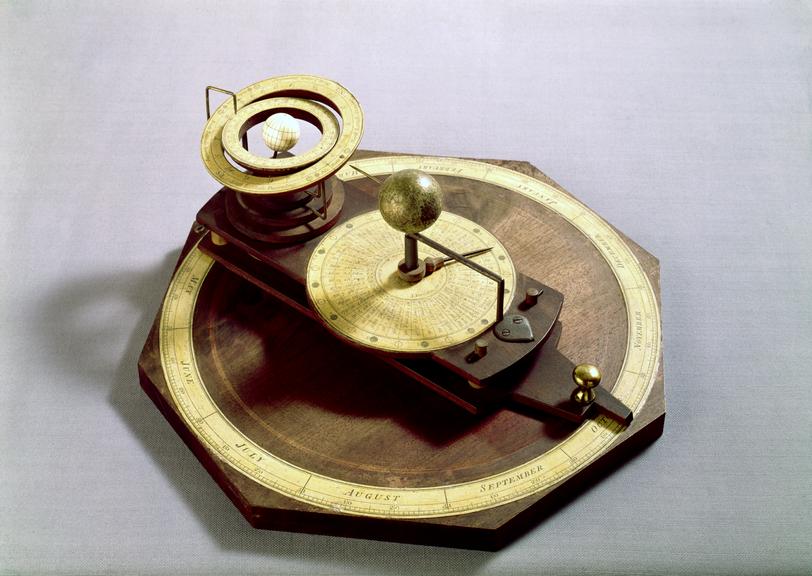Wooden case for wooden pulley Orrery with case by James Ferguson
Wooden case for wooden pulley Orrery with case by James Ferguson, London, mid 18th century.




Wooden pulley Orrery with case by James Ferguson, London to illustrate the motions of the Moon and Earth around the Sun, c.1755.
Dated to the mid-eighteenth century, this planetary model was made and designed by the astronomer James Ferguson (1710-1776). Called an orrery or more correctly a tellurium, it is a demonstration model to show the motions of the Earth and Moon around the Sun. This example is of all-wood construction with printed-paper scales and labelling. Such devices became popular during seventeenth century, especially after Sir Isaac Newton published his universal theory of gravity. To reproduce the motions of the solar system this model uses hand driven pulleys with cords. This type of model would have been commonly employed at astronomy lectures such as those widely given Ferguson during his lifetime.
Wooden case for wooden pulley Orrery with case by James Ferguson, London, mid 18th century.
Wooden pulley orrery made by James Ferguson to illustrate the motions of the Moon and Earth around the Sun.
During the 18th century Isaac Newton's theories of the universe were popularised by astronomical lecturers and instrument-makers such as James Ferguson. Ferguson published accessible, illustrated accounts of Newton’s ideas and produced demonstration model orreries. This orrery is based on Ferguson's 'mechanical paradox' design, with wooden wheels operated by pulleys.



